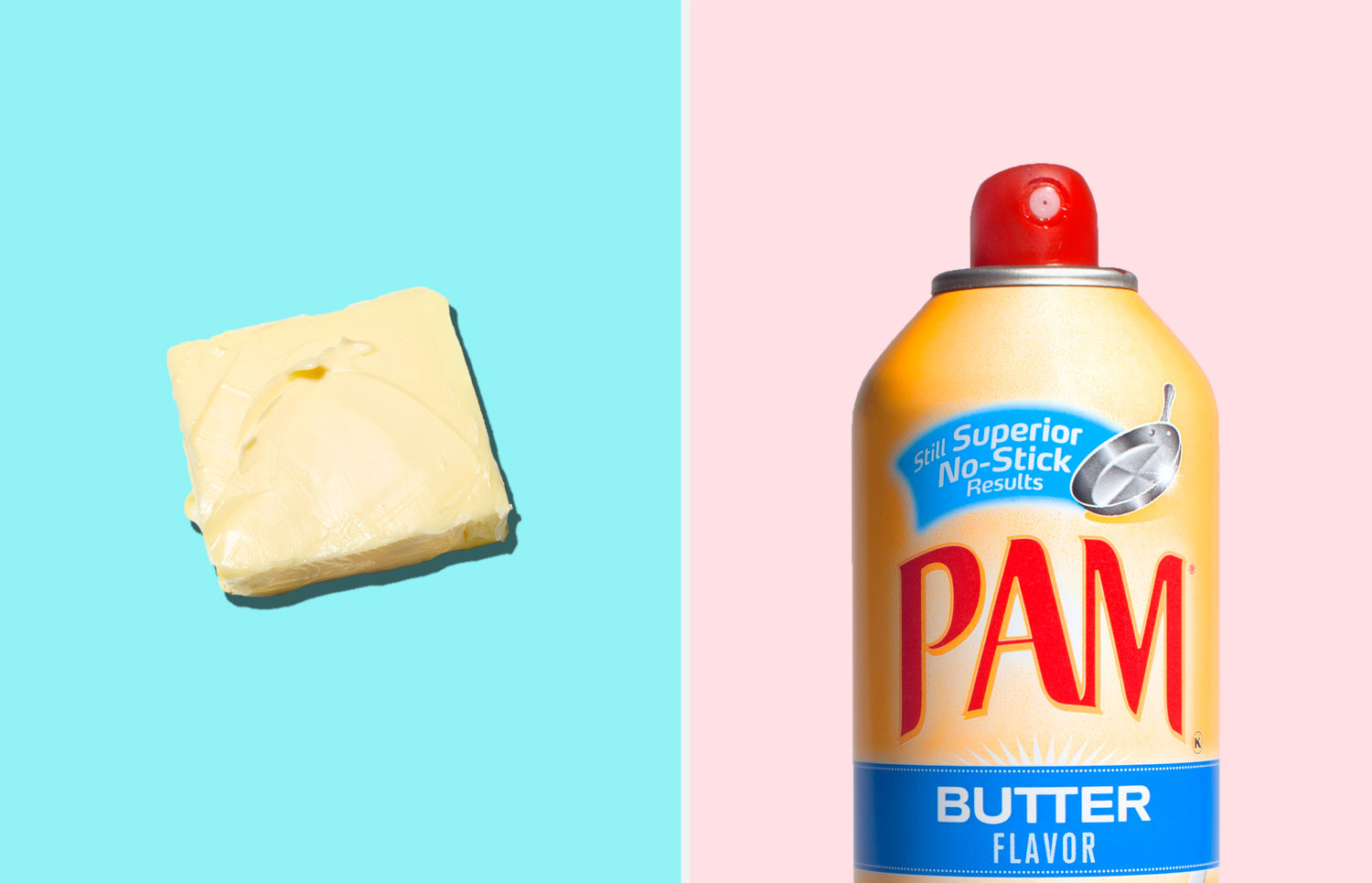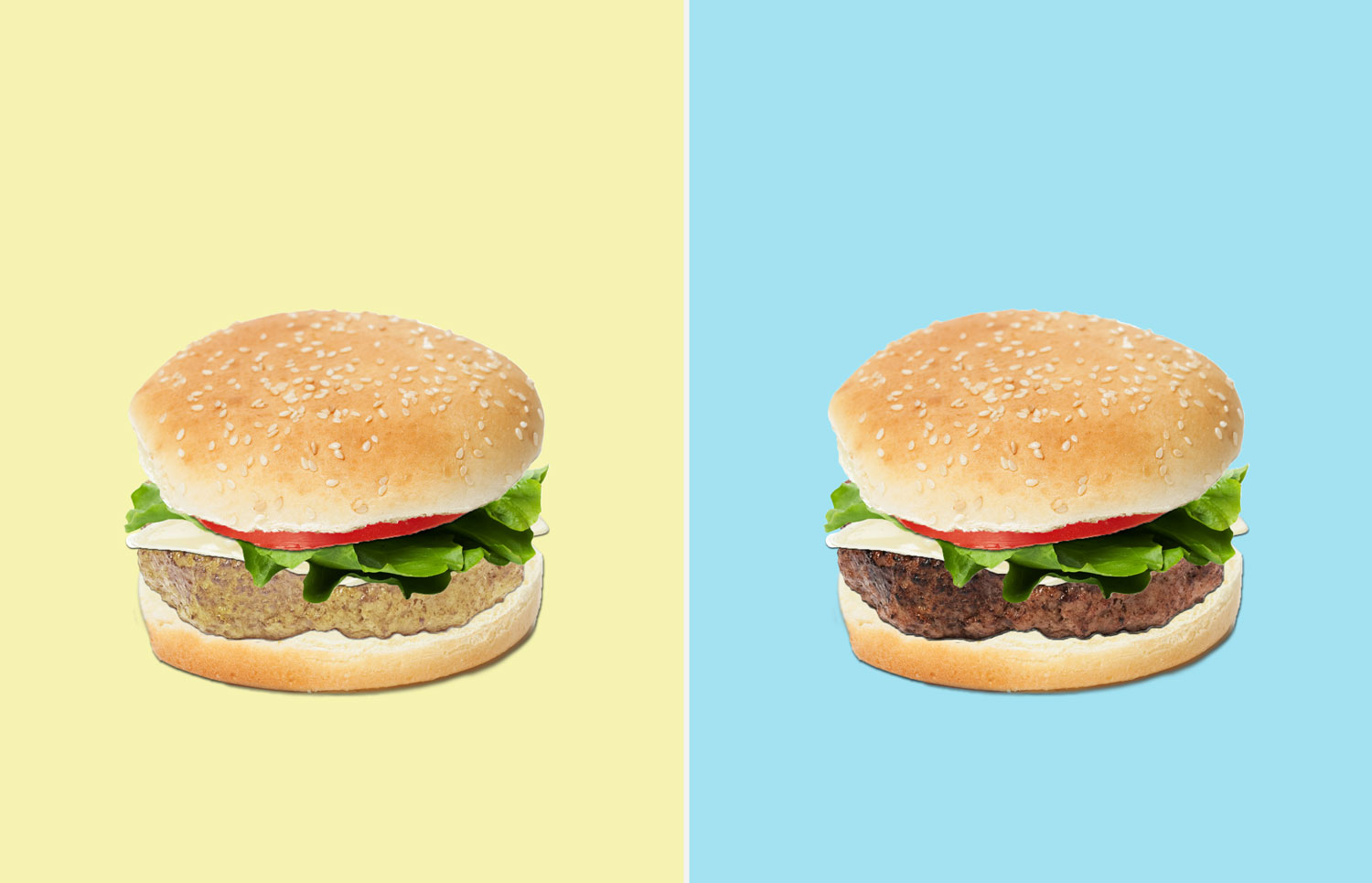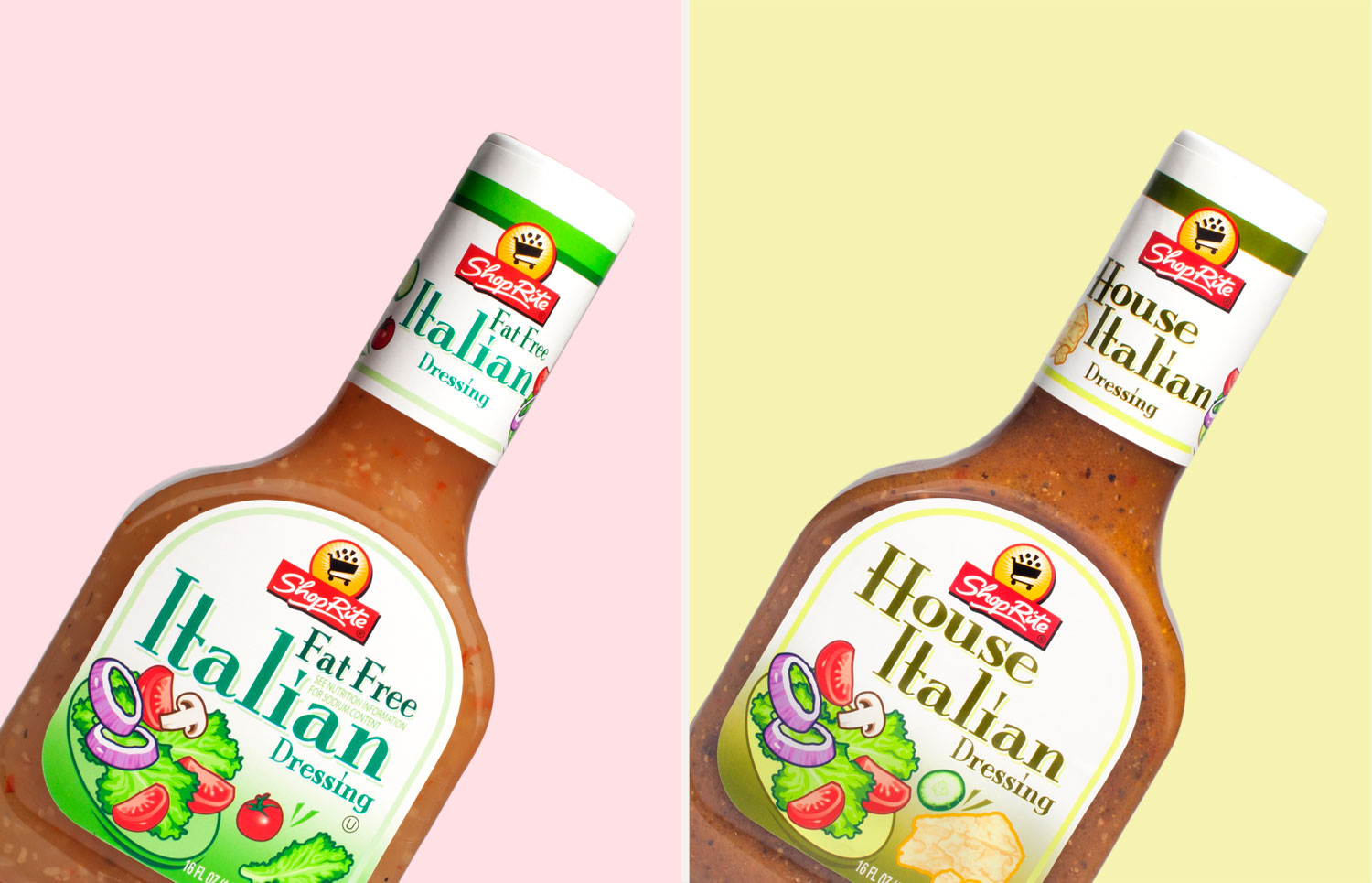Why is there an obesity epidemic? It’s not because we eat the wrong things or we lack exercise.
Research shows that, plain and simple, most of us just eat too much:
Reported consumption increased by 268 calories for men and 143 calories for women between the two surveys. This increase is more than enough to explain the increase in steady-state weight… The available evidence suggests that calories expended have not changed significantly since 1980, while calories consumed have risen markedly.
That’s hardly shocking.
But what’s interesting is there’s a way to fix this that doesn’t involve exercise or being deprived of your favorite foods.
No, this is not some silly pitch for low carb, low fat, Crossfit or the magical supplement of the week. Actually, it’s about psychology.
Brian Wansink is a Cornell researcher who studies how we eat. He was appointed by the White House to head up changes to US Dietary Guidelines.
He’s also the author of two fascinating books:
Mindless Eating: Why We Eat More Than We Think
Slim by Design: Mindless Eating Solutions for Everyday Life
In the course of his research, Brian realized something pretty interesting:we eat for lots of reasons — but usually not because of hunger.
Via Mindless Eating: Why We Eat More Than We Think:
Everyone — every single one of us — eats how much we eat largely because of what’s around us. We overeat not because of hunger but because of family and friends, packages and plates, names and numbers, labels and lights, colors and candles, shapes and smells, distractions and distances, cupboards and containers. This list is almost as endless as it’s invisible.
We are slaves to context. We eat because friends are around, because something’s free, because it’s in reach, because things are tasty, etc.
We respond to “food cues” over feelings. What we see is usually more important than what we actually eat. And Wansink wanted to prove this.
One of the things that makes his research so clever is that he’s sneaky.
(If you have the choice of trusting what a used car salesman says or what a psychology researcher tells you before a study, go with the car salesman.)
Wansink rigged bowls to be “bottomless.” A hidden tube made sure that no matter how much soup a subject ate, the bowl would not empty.
Then he fed people. What happened? People with normal bowls ate 15 ounces. Some with the rigged bowls more than a quart.
QUIZ: Should You Eat This or That?
















Except at extremes, what made people “full” was their eyes, not their stomachs. If the bowl didn’t look empty, they kept eating.
Via Mindless Eating: Why We Eat More Than We Think:
Surely diners realized that they ate more from the refillable bowl? Absolutely not. With a couple of exceptions, such as Mr. Quart Man, people didn’t comment about feeling full. Even though they ate 73 percent more, they rated themselves the same as the others—after all, they only had about half a bowl of soup.
Wansink realized that you can increase or decrease the number of calories someone eats by 20% without them realizing.
He calls this the “mindless margin.” And over a year it can easily cause you to gain or lose ten pounds.
Via Mindless Eating: Why We Eat More Than We Think:
If we eat way too little, we know it. If we eat way too much, we know it. But there is a calorie range—a mindless margin—where we feel fine and are unaware of small differences. That is, the difference between 1,900 calories and 2,000 calories is one we cannot detect, nor can we detect the difference between 2,000 and 2,100 calories. But over the course of a year, this mindless margin would either cause us to lose ten pounds or to gain ten pounds.
Can you see where I’m going with this?
Yes, we’re slaves to context. But that can be a good thing. By manipulating our environment we can drop 10 pounds (or more) without even noticing it.
So what do we need to do? Here are 6 insights from Wansink’s research that can make getting in shape much, much easier and nearly mindless.
1) Change What’s Visible
You don’t have to throw all that tasty junk food in the trash. But you do have to make sure it’s not sitting out, calling to you all day.
Via Mindless Eating: Why We Eat More Than We Think:
Out of sight is out of mind. If the candy dish sits on your desk, you consistently have to make a heroic decision whether you will resist the chocolate that has been giving you the eye all day. The easy solution is to lose the dish, move the dish, or replace the candy with something you personally don’t like.
Wansink studied how slim people behave at buffets vs what heavy people do. What was one of the differences?
Slim people were more likely to sit facing away from the buffet, while chubbier people were 3x more likely to sit looking at it.
Via Slim by Design: Mindless Eating Solutions for Everyday Life:
Moreover, they were three times more likely to sit facing the food, where they watched all the people who went back for seconds and thirds and fourths. Every time they saw someone take another lap around the stir-fry, it reminded them that was “normal” behavior.
Brian’s Syracuse study revealed that just by looking at what food was visible in a home he could predict what someone weighs.
Via Slim by Design: Mindless Eating Solutions for Everyday Life:
“In sight, in stomach.” We eat what we see, not what we don’t. Our Syracuse Study showed that we could roughly predict a person’s weight by the food they had sitting out.
Do you have fruit sitting out visibly in your house? You probably weigh 8lbs less than your neighbor who doesn’t.
Have cookies or chips sitting out? You probably weigh 8lbs more.
Have breakfast cereal sitting out? You probably weigh 19lbs more.
Have soda sitting out? You’re going to weigh, on average, 25lbs more than someone who doesn’t.
Brian discusses it at 55:30 of this video:
(To learn what to eat if you want to look sexier, click here.)
Okay, you’ve hidden the food. But what about when you’re eating? You have to bring the food out then, right?
2) Change What’s Reachable
Brass tacks here, people: Make eating more food a hassle.
Want to start losing weight easily? Use smaller dishes and make sure getting seconds requires you to cross the room.
Keeping serving dishes off the table reduced how much men ate by 29%.
Remember the people at the buffet? Heavy people, on average, sat 16 feet closer to all that delicious food than skinny people did.
Via Slim by Design: Mindless Eating Solutions for Everyday Life:
Slim people even acted differently after taking their food. They trotted back to faraway booths along the walls, and— here’s what’s cool— 73 percent faced away from the buffet. Heavy diners did the opposite. They sat at tables that were on average sixteen feet closer to the buffet.
Got candy on your desk at work? That’s probably a double digit increase in your weight, right there.
Via Slim by Design: Mindless Eating Solutions for Everyday Life:
People who had candy in or on their desk reported weighing 15.4 pounds more than those who didn’t.
Behavioral economist Dan Ariely is a big believer in context. When I interviewed him he told me a story about Google.
What happened when Google put M&M’s in containers instead of out in the open? People ate 3 million less of them in one month.
Here’s Dan:
Here’s an experiment that Google did recently. The M&Ms in their New York office used to be in baskets. So instead they put them in bowls with lids. The lid doesn’t require a lot of effort to lift but it reduced the number of M&Ms consumed in their New York office by 3 million a month.
(For more on how to build good habits, click here.)
Food is hidden and you’ve made overeating a hassle. But what if that’s not enough?
3) Plan Ahead
The skinny people at the buffet looked at everything, made a plan and then grabbed their food.
The heavy people just dove right in.
Via Slim by Design: Mindless Eating Solutions for Everyday Life:
Slim diners “scouted” out the buffet before grabbing a plate— before even picking up a plate, 71 percent of them walked around and scanned the salad bar, the steam trays holding fourteen seemingly identical chicken dishes, the sushi station, and the dessert bar. Only after they figured out the lay of the land did they grab their plate and swoop down to cherry-pick their favorites, with an eagle eye on the stir-fry. Heavier diners did the opposite. They were twice as likely to charge ahead to the nearest stack of plates, take one, and fill it up. They didn’t skip to the foods they really liked. Instead they served themselves a bit of everything they didn’t hate.
Shopping while hungry is a cardinal sin. It doesn’t make us buy more, it just makes us buy junk.
Via Slim by Design: Mindless Eating Solutions for Everyday Life:
They don’t buy more, but they buy worse. When we’re hungry, we buy foods that are convenient enough to eat right away and will stop our cravings. We don’t go for broccoli and tilapia; we go for carbs in a box or bag. We go for one of the “Four C’s”: crackers, chips, cereal, or candy. We want packages we can open and eat with our right hand while we drive home with our left.
Anything that distracts us causes us to eat more because we aren’t paying attention to how much we’re eating. TV is especially bad here.
Via Mindless Eating: Why We Eat More Than We Think:
The basic rule: distractions of all kinds make us eat, forget how much we eat, and extend how long we eat—even when we’re not hungry… The longer they watched TV, the more they ate. In fact, if they watched TV for an hour, they ate 28 percent more popcorn than if they watched for a half hour.
Guess what’s more effective than exercise when trying to drop those extra pounds? Merely reading food labels:
Label users who did not exercise displayed a slightly greater likelihood of weight loss than those who exercised but did not read food labels.
And what personality trait best predicts obesity? Being impulsive:
Impulsivity was the strongest predictor of who would be overweight, the researchers found. Study participants who scored in the top 10 percent on impulsivity weighed an average of 22 lbs. more than those in the bottom 10 percent, according to the study.
Our environment calls to us and if you’re not thinking before you’re acting, your surroundings had better be arranged properly.
(For more on how to increase willpower and self-control, click here.)
We’re making progress but is there any important advice on how to eat? Yup.
4) Slow Down
The heavy people at the buffet chewed 12 times per mouthful. The skinny people chewed an average of 15 times.
Research shows eating slower gives time for the “fullness” signal to kick in:
That study found that women who were told to eat quickly consumed 646 calories in nine minutes, but the same women consumed just 579 calories in 29 minutes when encouraged to pause between bites and chew each mouthful 15 to 20 times before swallowing.
How long does the fullness signal take to do its job? About 20 minutes.
Problem is, the average American meal today doesn’t even last 20 minutes.
Via Mindless Eating: Why We Eat More Than We Think:
Many research studies show that it takes up to 20 minutes for our body and brain to signal satiation, so that we realize we are full. Twenty minutes is enough time to inhale two or three more pieces of pizza and chug a large refill of Pepsi. Here’s the problem. We Americans start, finish, and clear the table for many of our meals in less than 20 minutes.
The same amount of food can make you full or still hungry entirely depending on how quickly you eat it, so slooooooow down.
(For more on why your relationship with food is so crazy, click here.)
Nobody likes to have to avoid their favorite foods so what’s an easier thing to avoid that can have big results?
5) Variety Is Not The Spice Of Weight Loss
This is one of the reasons we overeat at buffets: we want to try everything.
Give people three options and they eat 23% more than if they only had one choice.
Via Mindless Eating: Why We Eat More Than We Think:
Increasing the variety of a food increases how much everyone eats. To demonstrate this, Dr. Barbara Rolls’ team at Penn State has showed that if people are offered an assortment with three different flavors of yogurt, they’re likely to consume an average of 23 percent more than if offered only one flavor…
What does Brian recommend?
Never have more than two items on your plate at any time. You can go back for more, but lack of variety and having to get up makes you eat less.
(For more on how to be resilient when faced with challenges, click here.)
You’ve reduced your options. But food isn’t the only thing that affects how much you eat. Another element of your environment is key too.
6) Be Mindful Of Those You Eat With
How much you eat is strongly affected by how much those around you eat, but you rarely realize it.
Dining with friends? You’ll probably eat twice as much.
Via Mindless Eating: Why We Eat More Than We Think:
On average, if you eat with one other person, you’ll eat about 35 percent more than you otherwise would. If you eat with a group of seven or more, you’ll eat nearly twice as much—96 percent more—than you would if you were eating alone at the Thanksgiving card table in the other room. If you get a reservation for a table for four, you’ll end up right in the middle—you’ll eat about 75 percent more calories than if you reserve a table for one.
Eating with overweight friends? You’ll eat more.
Is your waitress overweight? You’ll eat more.
Are you a woman eating with a man? You’ll eat less.
Who do you need to be most careful around? Skinny overeaters.Why?
It makes your brain think you can eat like they do without any downside. But for all you know that might be their only meal of the day…
(For more on how to make friends and improve your friendships, click here.)
So we’ve got lots of stuff that can help us eat less. Let’s round it all up.
Sum Up
Here are great tips from Brian Wansink:
So you’re ready to start implementing all this tomorrow? Going to totally overhaul how you eat? Bad idea.
Wansink realized people who were successful at this made changes slowly but were consistent.
Via Slim by Design: Mindless Eating Solutions for Everyday Life:
People who most successfully lost weight made only one or two changes but stuck with them day after day— an average of at least twenty-five days a month. Unfortunately, the people who didn’t lose weight often tried to tackle too much all at once. They tried to change everything, and most gave up within a month.
We live most of our lives on autopilot. But with a few simple controls in place, autopilot can get us where we want to go.
As Wansink is fond of saying:
The best diet is the one you don’t know you’re on.
Want more lessons from Brian’s research?
I’ll be sending out how to handle eating in restaurants and the most important secret to good grocery shopping in my weekly email.
This piece originally appeared on Barking Up the Wrong Tree.
For those tips and more, join over 135,000 readers and get my free weekly email update here.
Related posts:
What 10 things should you do every day to improve your life?
How To Make Your Life Better By Sending Five Simple Emails
4 Lifehacks From Ancient Philosophers That Will Make You Happier
Read next: The Food Ingredient That Could Be Messing With Your Gut
More Must-Reads From TIME
- The 100 Most Influential People of 2024
- Coco Gauff Is Playing for Herself Now
- Scenes From Pro-Palestinian Encampments Across U.S. Universities
- 6 Compliments That Land Every Time
- If You're Dating Right Now , You're Brave: Column
- The AI That Could Heal a Divided Internet
- Fallout Is a Brilliant Model for the Future of Video Game Adaptations
- Want Weekly Recs on What to Watch, Read, and More? Sign Up for Worth Your Time
Contact us at letters@time.com